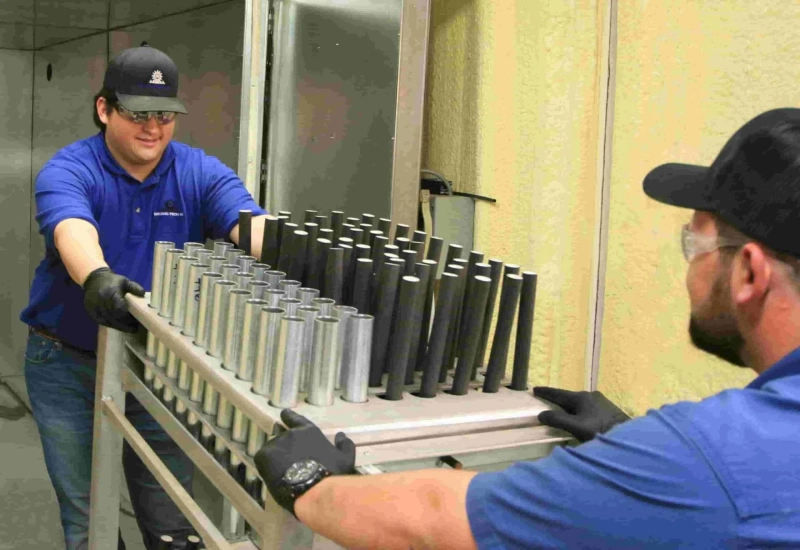In the realm of explosives, two common forms stand out: bulk explosive powders and pressed explosive powders. Each type serves distinct purposes in various industrial, military, and mining applications, tailored to specific requirements of handling, storage, and deployment. This article delves into the characteristics, uses, and differences between bulk and pressed explosive powders, shedding light on their significance in different sectors.
Bulk Explosive Powders
Bulk explosive powders, as the name suggests, are typically granular or powdered explosives that are not compacted into specific shapes or forms. They are characterized by their loose, free-flowing nature, making them versatile for a range of applications. These powders are primarily used in scenarios where quick and efficient deployment is necessary, such as in mining operations, demolition work, or certain military applications.
One of the key advantages of bulk explosive powders lies in their ease of handling and transport. They can be poured or pumped into place, allowing for rapid deployment over large areas or into confined spaces where other forms of explosives might be impractical. This characteristic makes bulk explosive powders particularly suitable for blasting in mines or quarry operations, where precise placement and coverage are essential for efficient extraction of minerals or materials.
Moreover, bulk explosive powders can be tailored to specific explosive strengths and sensitivities, depending on the desired application. This flexibility in formulation allows for customization based on factors such as desired blast radius, environmental conditions, and safety considerations. Engineers and technicians carefully calibrate these formulations to ensure optimal performance while minimizing risks associated with handling and storage.
In industrial settings, bulk explosive powders are often delivered and stored in specialized containers or vehicles designed to handle their unique properties. Safety protocols dictate strict procedures for storage and handling to prevent accidental detonation or exposure to external stimuli that could trigger unintended explosions.
The above definitions will help you to understand the bulk and pressed explosive powders both.
Pressed Explosive Powders
In contrast to bulk explosive powders, pressed explosive powders undergo a manufacturing process where the loose granules or powders are compacted under high pressure into specific shapes or forms. This process results in denser, more stable units that exhibit different characteristics compared to their bulk counterparts.
However, both bulk and pressed explosive powders are commonly used in applications where controlled and predictable explosive behavior is crucial. Their compact nature allows for precise placement and timing, making them suitable for military munitions, demolition charges, and specialized blasting operations where accuracy and reliability are paramount.
The pressing process not only enhances the density of the explosive material but also influences its sensitivity and detonation characteristics. Engineers can manipulate these properties during manufacturing to achieve desired outcomes, such as varying levels of shattering force or directional blast patterns. This level of control is particularly valuable in military operations, where tactical considerations demand exacting performance standards.
Furthermore, pressed explosive powders often exhibit improved stability during storage and transportation compared to their bulk counterparts. The compacted form reduces the risk of accidental ignition or degradation due to environmental factors, ensuring reliability and safety until deployment.
Applications and Considerations
Both bulk and pressed explosive powders play indispensable roles across diverse industries, each offering unique advantages depending on the specific application requirements:
• Mining and Quarrying: Bulk explosive powders are favored for their ability to cover large areas efficiently, facilitating ore extraction and quarry operations.
• Demolition and Construction: Pressed explosive powders are utilized for controlled demolition tasks where precision and safety are critical.
• Military and Defense: Both forms find use in military applications, with bulk powders supporting larger-scale operations and pressed powders fulfilling tactical and strategic roles.
Conclusion
In conclusion, understanding the distinctions between bulk and pressed explosive powders is essential for appreciating their respective roles in various industrial, military, and mining applications. While bulk powders offer versatility and ease of deployment, pressed powders excel in precision and controlled detonation scenarios. Both types undergo rigorous formulation and safety protocols to ensure optimal performance and minimize risks associated with handling and storage. By leveraging their unique characteristics, engineers and operators continue to innovate and advance the field of explosive technology, driving efficiency and safety across diverse sectors.



